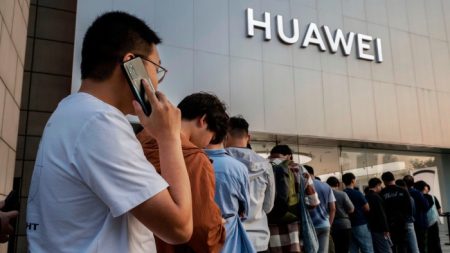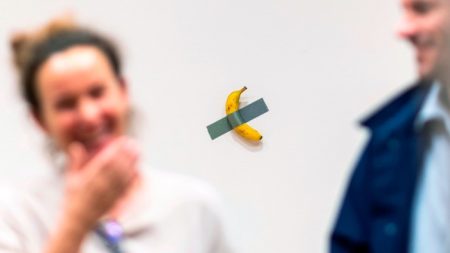In 1992, Sony unleashed a revolution in portable electronics. Taking advantage of decades of laboratory research on lithium-ion batteries, the Japanese company was able to introduce products such as mobile phones and handheld video cameras that have changed the lives of billions of consumers.
Batteries now underpin the prodigious task of overhauling the global energy and transport system to reduce reliance on fossil fuels. While the cost to make lithium-ion batteries has plummeted, allowing electric car sales to take off in recent years, the bare bones of the technology have remained little changed since commercialisation.
After three decades of incremental optimisation, however, that orthodoxy could soon be upended. Toyota, the world’s largest automaker, has indicated in recent weeks that it is close to a manufacturing breakthrough for a potentially game-changing technology: solid-state batteries. Hype has been building since a series of announcements on the next-generation technology by the Japanese car manufacturer in June. Its market capitalisation has surged by $26bn since then.
If successful, Toyota could start selling EVs that are safer, can recharge more rapidly and can drive 1,200 kilometres on a single charge — around double the company’s current average — as early as 2027.

“A race is on worldwide to succeed in the solid-state battery space,” says Peter Bruce, co-founder and chief scientist of the Faraday Institution, a British battery research institute. “If Toyota or anyone else succeeds in fabricating solid-state batteries that are cost competitive and deliver the lifetime that is needed, then they could deliver a step-up in energy density and 10-minute charging. If they hit those metrics, it will be disruptive.”
If the technology is successfully introduced, the impact could be dramatic. It would shake up the auto industry where sales of EVs and batteries are currently dominated by Tesla, and China’s BYD and CATL; it would have geopolitical implications given western anxiety about China’s current dominance of batteries and their raw materials; and it could open up the application of batteries to new areas of transport such as aviation.
Some observers believe the shift could be as momentous as that from corded telephones and landlines to mobile phones.
But solid-state battery technology is not without its sceptics. Critics ask whether basic scientific issues have been addressed; others question whether high-speed, mass volume manufacturing can ever be done, or if a sizeable market will ever exist.
“The excitement around solid-state batteries implies the existing set of solutions is not good enough. It’s self-evidently not true. Sales are growing at 20 to 30 per cent a year and almost everyone who tries them says they are never going back,” says Alex Brooks, an analyst at Canaccord Genuity. “Right now it’s a hyped-up research project.”

Toyota’s latest claim of a breakthrough has reignited the question over quite how soon solid-state batteries are going to make a major contribution to decarbonising the global transport system. Venkat Srinivasan, director of the Argonne Collaborative Center for Energy Storage Science, a US government funded laboratory, calls them the battery industry’s “holy grail” in the long term.
“But are these interesting lab-scale innovations that still have a big bridge to cross before they are manufacturable, or something that can soon be produced at scale?” he asks. “I am still struggling with that.”
A solid foundation
All batteries work in the same way: a stream of electrically charged atoms known as ions flow through a chemical material called an electrolyte from the anode to the cathode, the cell’s two electrodes, generating a current in the process.
Solid-state batteries differ from current lithium-ion cells in that the electrolyte is solid instead of liquid. Different materials, including polymers, oxides and sulphides, are being tested as potential electrolytes. Cars using solid-state batteries would be far safer, as liquid electrolytes can be at more risk of fires.
Changing the electrolyte on its own would not necessarily result in a step-change in battery performance. The real excitement hinges on a technological development that it would enable: lithium metal anodes. Replacing the graphite that is used in current anodes would help double the battery’s range, in part because it would be lighter.
Solid-state batteries have faced longstanding basic technology challenges. One is the difficulty of maintaining battery performance and avoiding failure since repeated charges and discharges cause the formation of dendrites, bunches of lithium, which can lead to cracking. Another challenge is enabling a stable contact between solid materials.
The first “breakthrough”, claimed by Toyota in June, related to resolving the technical issues of durability, although details were scant on what kind of materials led to its breakthrough. Last week, it announced a partnership with petrochemicals group Idemitsu Kosan to jointly develop and produce a sulphide electrolyte, which it said would be key to commercialisation within five years.

“We’re confident that sulphide-based solid electrolytes are the most promising solution for battery EV issues such as cruising range and charging times,” Idemitsu’s chief executive Shunichi Kito said at a joint news conference with Toyota.
Scientists increasingly agree the basic technology challenges no longer appear insurmountable. That makes the next challenge scaling up for mass production. The assembly process poses one of the biggest obstacles since layers of cathode–anode cells need to be stacked quickly and with high precision, without damaging the materials.
Toyota’s engineers have also claimed advances here. The group is now increasingly confident that it can stack the cells at the same rate as current lithium-ion batteries.
Yet other technical hurdles need to be cleared to achieve full-scale mass production. “We still need a breakthrough in terms of ensuring the volume and quality of the battery materials,” one of its engineers said during a plant tour last month.
Global impact
The introduction of solid-state batteries could have a profound impact on the future of the global automotive industry.
At the moment, China has the potential to dominate the next stage of the industry because of its leadership in both battery technology and manufacturing: it produced more than 75 per cent of batteries globally last year, according to the International Energy Agency.
CATL is by far the world’s biggest battery maker, boasting a market share of 37 per cent. The Ningde-based company is the most profitable battery maker and has a formidable cost advantage, in part because of its scale and investment in research and development.
Solid-state might be the only way to leapfrog Beijing in the battery race. Toyota is far from the only company investing in the technology. Nissan and Honda have their own programmes. South Korea’s three leading battery producers — LG Energy Solution, Samsung SDI and SK On — have all declared their intention to develop such cells by the late 2020s. US start-ups QuantumScape and Solid Power, partners of Volkswagen and BMW, respectively, have similar commercialisation target dates for their own technologies.
Akitoshi Hayashi, professor at Osaka Metropolitan University, says it will be “extremely challenging” to mass-produce solid-state batteries to the same quality as current lithium-ion batteries, but if achieved, the technology will be “globally unbeatable”.
“Solid-state batteries will be key to the revival of Japanese carmakers, who are behind in EV strategy and for Japan, which has lost world market share in lithium-ion batteries,” he adds.
China also controls the processing of battery raw materials. Solid-state batteries could reduce certain vulnerabilities such as the current reliance on graphite, which Beijing placed export restrictions on last week. But they would do little to ease forecasted lithium shortages since they would consume even more than current batteries.
Industry leaders in China and Korea are less sanguine about solid-state batteries achieving their promise. According to a person close to CATL, the Chinese group’s researchers have been working for the past decade to crack solid-state batteries. They have yet to find a cost-effective system for mass production — and, internally at CATL, there is scepticism that Toyota has achieved this.
Korean industry leaders concur. “Developing a product and commercialising it are two different matters,” says one executive. “Toyota has been talking about mass production of solid-state batteries for [more than] 10 years, but they keep delaying the timing.”
Manufacturing obstacles
Even if technology and scale-up challenges can be overcome, it is a huge unknown whether solid-state batteries can bring production costs down in time to accelerate the global rollout of EVs.
Economies of scale will help reduce costs. But the performance and cost of current lithium-ion batteries are also improving constantly, as other technologies such as silicon anodes make advances. Solid-state batteries’ extreme sensitivity to moisture and oxygen could keep manufacturing costs high, while their complexity could require expensive redesigns of EVs.
If the costs do not come down enough, then solid-state batteries could end up being limited to luxury cars or trucking. Kim Dong-myung, head of the advanced automotive battery division of Korea’s LGES, says that producing them is “too costly” and there will be “very limited applications”. Even if everything goes as planned, solid-state batteries can only take about 10 per cent of the overall market for EVs by 2035, estimates Lee Kyung Sub, head of the battery materials business at Korean conglomerate Posco.
Toyota’s chief executive Koji Sato himself has been hesitant to call solid-state batteries “a game-changer” for winning the global EV race. Sato has indicated that solid-state batteries will initially be rolled out in small volumes in high-end models, while lithium-ion batteries will continue to be used for more affordable cars.
“Solid-state battery technology will be an extremely important factor in terms of building our overall strength in the various battery products that we have,” Sato said last week. “But batteries alone will not determine the value of our vehicle.”
Many industry executives agree that solid-state’s constituent technologies will gradually be integrated into today’s batteries. CATL appears to be planning to do exactly that, unveiling in April a new “condensed”, or “semi-solid-state”, battery with double the energy density of current models.
“A fully solid-state battery is an ideal of where we want to go,” says Glen Merfeld, chief technology officer at Albemarle, the world’s largest lithium producer. “Today’s lithium-ion batteries will end up evolving to look like that.”
For all the technical obstacles that remain, some observers believe the potential impact could be profound. A battery with substantially improved performance could open up a redesign of many aspects of global mobility, ranging from robotaxis to regional aviation and new kinds of drones.
“Solid-state has to fulfil a mission. The job of new batteries is never to replace old batteries. It’s to unlock things we couldn’t do previously,” says Shirley Meng, battery professor at the University of Chicago. “By leveraging on the new driving range and charging time, the Japanese car companies are reimagining the future of transportation.”
Additional reporting by Edward White in Seoul and Ryan McMorrow in San Francisco
Read the full article here















